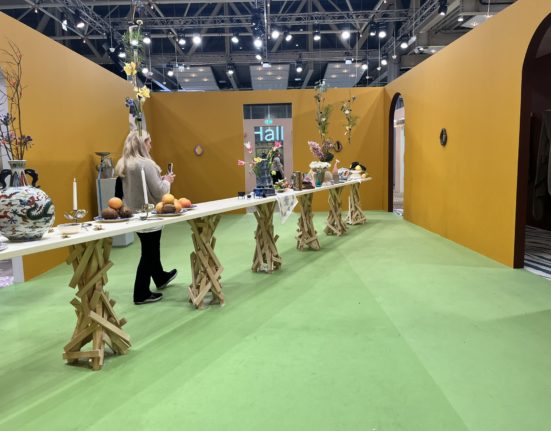Need to escape the city? YLC’s Victoria Hussey discovers the hidden gardens within the city, where Stockholmers grow their own produce, potter among flowerbeds or enjoy getting away from it all.

Nestled away amongst the city’s high-rise apartments and busy motorways are Stockholm’s secret gardens; unexpected leafy havens where a community of gardeners busily potter away pruning, planting and harvesting. Members of the allotment compound have, over the past one hundred years, transformed their potato plots into beautiful gardens and a blossoming community.
Eriksdalslunden kolonilotter (or allotment compound) start at Skanstull on Ringvägen and runs alongside the south slope of Söder to Årstaviken bay. Take a walk down its narrow gravel pathways and it would be easy to forget you are in a capital city save for the hum of traffic from nearby Skanstull Bridge.
Eriksdalslunden is one of the city’s largest allotment communities and because of its position by the water, even boasts its own microclimate perfect for growing exotic species such as Ginkgo (Maidenhair tree), Davidia (Handkerchief tree), Morus (Mulberry), Bamboo, Magnolia and peaches.
The city’s allotments, founded by Stockholm nurse Anna Lindhagen in the early 1900s, were introduced as a way of helping Stockholm’s poor grow their own vegetables and reap the benefits of outdoor pursuits.
While some choose to continue in the tradition of growing edible delights – onions, potatoes, fruits, herbs and lettuces – others choose to carpet their plots in wild roses, rhododendrons and peonies.

Founder of community gardening project, The Peterson Garden Project in the United States, LaManda, who is married to a Swede, discovered Tantolunden’s kolonilotter of on a trip to visit family in Stockholm in 2010.
“There’s a charming “mini city” atmosphere, which is delightful and it’s inspired my work in Chicago to connect people through community gardening. I’ve been trying to talk my mother-in-law into getting on the waiting list for a kolonilott ever since.”
Recent figures show there are around 25, 000 of these allotment gardens throughout Sweden. In Stockholm, other central pockets of allotments are situated in Tantolunden (Årstaviken, also on Södermalm), Söderbrunn on northern Djurgården and Karlbergs – Bro, Kungsholmen.
Each plot consists of a tiny house (or stuga) and a small area of land behind picket fences. Each house is typically small – the size of a garden shed but far prettier – with a couple of rooms, a sink, perhaps a table and chairs, and areas for potting tools. Many have rain barrels for water supply and some have even been transformed into liveable summer houses.

“My girlfriend’s parents, who live in the north of Sweden, stay in ours over the summer,” Stockholm dentist Stefan told YLC.
“The cabin is about 24m so it’s not very big but we have water and lots of facilities inside so it’s definitely liveable!”
If this rather idyllic summer living appeals, be prepared for a wait. In some cases, the prospective green-fingered have had to wait up to twenty years to own their own inner-city haven. For others the waiting has been less (around three to four years). There are also allotment compounds further from the inner city for those who don’t mind the journey to the suburbs. More info on Stockholms allotments can be found here (in Swedish).
However long the waiting time, owning an allotment is not always an easy task.
“The last owner of our plot was about 85 years old and hadn’t been able to do much in the garden for a while, so we had to spend a lot of time and money fixing it up, including repainting the cabin,” said Stefan.
“And there are a lot of rules. Every September a guy visits the lot to check it – if he’s disappointed he’ll try us to repaint or fix something so it stays looking nice.”
But after all the toil, when it the summer season finally arrives, allotment owners reap the rewards of their hard work.
“In the summer, we sit in the garden and drink beer!” Stefan told YLC with a laugh.
“But more importantly we have a five-year-old and he spends the summer running around the garden. And in Midsummer, we all [the community] get together and do all the traditional Swedish things – dancing around the pole, just enjoying being outside!”
If you don’t fancy the lengthy waiting list and hard-work, there’s still time to view these secret gardens before they hibernate over the dark, cold months, bursting into life again next spring.
Victoria Hussey
A self-confessed country-girl, Victoria studied English literature and fashion writing in the UK and Milan and then swapped English village life for city living in Stockholm in April 2013. She has spent the last five months swotting up on Swedish fashion and exploring her favourite part of Sweden; its national parks. Victoria enjoys travelling to far-off lands, alternative music and wishes someone would invent some kind of socially-acceptable breakfast ice-cream.
Follow Victoria and Your Living City on Twitter!











